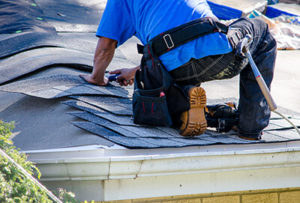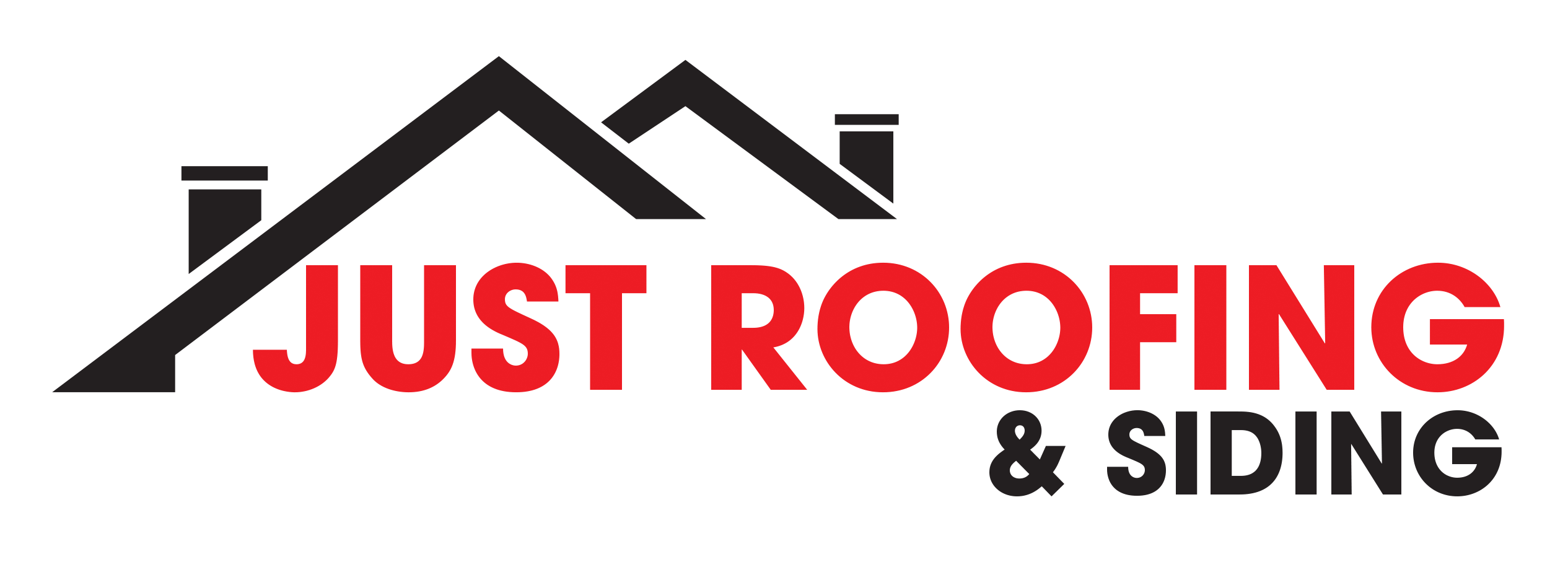Repairs

When you have a roof, repairing it is a necessity. Here at Just Roofing, we proudly serve Maine residents with our professionals, capable of repairing your roof and helping it last for many years.
Roof Flashing
Roof flashing keeps water from entering any cracks or openings in your roof. A roofing expert will place it underneath your roof’s shingles to redirect water elsewhere.
You can use different materials for flashing like galvanized steel, aluminum, stainless steel, or copper. Flashing may be installed around gutters, windows, doors, and chimneys.
The best place to install roof flashing is on any exterior joints that water drains from.
Make sure you’re installing roof flashing in the following places, as they are critical areas of your roof that require protection:
- Roof surfaces that join your walls, including front and side walls
- The lowest points where two roof slopes join, called valleys
- Places where your roof protrudes, including any bathroom vents, kitchen vents, and skylights you may have
- Eaves and rakes, which are your roof edges
Roofing Underlayment Suggestions
Using roofing underlayment is necessary to protect your roof from the elements, especially if you’re living in a place like the Northeast. Using underlayment protects your roof deck from the rain before you have your roof installed.
It also provides an essential extra barrier from inclement weather in case of water penetration or blowoffs. Your roofing underlayment is usually required if you apply a UL fire rating.
The three basic types of roofing underlayment include the following:
- Asphalt-Saturated Felt
- Rubberized Asphalt
- Non-Bitumen Synthetic
Asphalt-Saturated Felt
Asphalt-saturated felt paper is one of the most common roofing underlayments used in residential applications. The felt underlayment is water-resistant.
It comes in two thicknesses: 15-pound and 30-pound. 30-pound is thicker and more resistant to any damage during installation. It can protect your roof longer from weather exposure.
Rubberized Asphalt
Rubberized asphalt often has adhesive on one side and a rubber-like quality, meaning it’s self-sealing and seals well around nails and staples. Some rubberized asphalt is specially formulated for use in high temperatures.
The underlayment is designed to resist heat up to 250 degrees Fahrenheit without the adhesive degrading. For these specially formulated versions, they can be installed under metal roofs and do well in harsh environments.
Non-Bitumen Synthetics
This underlayment is lightweight and quite strong. An advantage of non-bitumen synthetic underlayment is they are resistant to fungal growth and won’t wrinkle because they don’t absorb moisture.
This underlayment is also resistant to most UV damage. You can leave them exposed to the weather for six months to a year at a time.
Roofing Deck Work
You may not realize that you need roof decking. It’s a term for the boards that fill the spaces between your roof’s structural parts, like its joists and trusses.
Decking creates a flat plane that you can fasten shingles to. Our Just Roofing workers can also use this decking as a path. If you have a metal roof, decking helps absorb noise. This is most useful during rainstorms.
There are different kinds of roof decking, including:
Oriented Strand Board (OSB)
OSB is the most common material used for roofing deck work. A large part is because it’s quite durable and low-cost compared to other materials. OSB comes from interwoven strands of wood held together with adhesive.
Plywood
Another common material for roof decking is plywood, specifically half-inch construction-grade plywood. It’s also easy to use and has the same standard spacing for thermal expansion and contraction.
Tongue and Groove
Tongue and groove decking uses a two-by-six board. On each board, you’ll find a tongue and a groove. These lock into each other when you install them. Our roofing experts use these on roofs that don’t have a ceiling, creating a pleasing aesthetic effect when you look inside.
Plank Sheathing
Plank sheathing is only used on certain roofs, like wood shakes. Instead of creating a flat plane, your roofing contractor will space the planks about one and a half inches apart.
All repairs go above and beyond to guarantee that you will never have another issue in that area again, request your free quote today.


